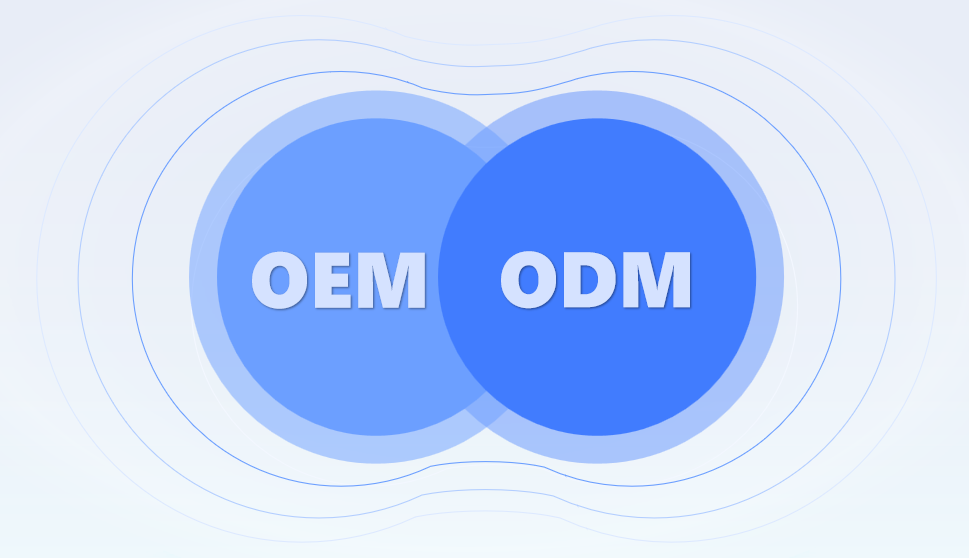

最初は、予算が厳しくなったり、作業したりするだけで、ODMがより良い選択肢かもしれません。しかし、リソースがあり、完全にユニークなものを作成したい場合、OEMは投資の価値があります。カスタマイズのニーズ:製品設計を完全に制御します。すべてを材料から機能に変更できます。カスタマイズのニーズ:カスタマイズは、サプライヤーが許可するものに限定されます。通常、ブランディングとパッケージを調整できますが、設計の変更は制限される場合があります。設計と機能が重要な製品を再起動することは、OEMが行く方法です。あなたが最小限の変更で既存のデザインを使用しても、ODMの方が適している可能性があります。リードタイム:設計、プロトタイピング、および生産プロセスによる長いリード時間。カスタマイズのニーズ:設計はすでに整っているため、市場に出る時間が短くなります。
時間が重要な要素である場合 - たぶん、季節の製品を発売する必要があるか、トレンド市場を活用する必要がありますが、ODMはあなたの製品をより速く出すのに役立つ可能性があります。カスタマイズのニーズブランディングフォーカス:市場で際立っている独特のブランド製品を作成したい企業に最適です。最小限の変更で既存のデザインを使用しても、ODMの方が適している可能性があります。:既存の製品を中心にブランドを構築したいが、独自のレーベルを使用している企業に適しています。OEMおよびODMサービスを開始する方法カスタマイズのニーズOEMから始まります
:作成したい製品の種類を専門とするメーカーを探してください。カスタマイズのニーズデザインを作成または選択します:市場で際立っている独特のブランド製品を作成したい企業に最適です。:社内でデザインを開発するか、デザイナーと協力してユニークなものを作成します。プロトタイピングとサンプル:大量生産にコミットする前に、プロトタイプとサンプルを要求して、製品が基準を満たしていることを確認してください。カスタマイズのニーズ品質管理
注文とスケール
:彼らは他のビジネスからの肯定的なレビューや参照を持っていますか?ポートフォリオを確認してくださいカスタマイズのニーズ:OEMの場合、彼らはあなたの製品カテゴリの経験がありますか? ODMのために、彼らはあなたのブランドに合ったさまざまなデザインを提供していますか
サンプルをリクエストしますカスタマイズのニーズ:大量注文する前に、常に製品の品質を検証するためのサンプルを要求してください。:既存の製品を中心にブランドを構築したいが、独自のレーベルを使用している企業に適しています。彼らのコミュニケーションとサポートを評価します:一緒に作業しやすいレスポンシブサプライヤーは、後で多くのトラブルを節約できます。比較表:ODM対OEMカスタマイズのニーズ特徴カスタマイズのニーズ設計の制御
事前に設計された製品に限定されています
:彼らは他のビジネスからの肯定的なレビューや参照を持っていますか?ポートフォリオを確認してくださいカスタマイズのニーズグローバルソースカスタマイズのニーズ、 そして
OEMとODMの両方の幅広いメーカーを閲覧できます。カスタマイズのニーズ展示会
最初は、予算が厳しくなったり、作業したりするだけで、ODMがより良い選択肢かもしれません。しかし、リソースがあり、完全にユニークなものを作成したい場合、OEMは投資の価値があります。カスタマイズのニーズサプライヤーの資格情報
最初は、予算が厳しくなったり、作業したりするだけで、ODMがより良い選択肢かもしれません。しかし、リソースがあり、完全にユニークなものを作成したい場合、OEMは投資の価値があります。カスタマイズのニーズ最適かもしれません。ただし、最小限のカスタマイズで市場への費用対効果の高速なルートが必要な場合は、カスタマイズのニーズ素晴らしいオプションです。
カスタマイズのニーズ
|
|
:市場で際立っている独特のブランド製品を作成したい企業に最適です。 |
:既存の製品を中心にブランドを構築したいが、独自のレーベルを使用している企業に適しています。 |
|
|
|
|
|
|
|
|
|
|
|
|
| :既存のデザインを閲覧し、ビジョンに合ったデザインを選択してください。 |
|
|
|
|
|
|
:市場で際立っている独特のブランド製品を作成したい企業に最適です。:既存の製品を中心にブランドを構築したいが、独自のレーベルを使用している企業に適しています。
メールフォーマットエラー
emailCannotEmpty
emailDoesExist
pwdLetterLimtTip
inconsistentPwd
pwdLetterLimtTip
inconsistentPwd